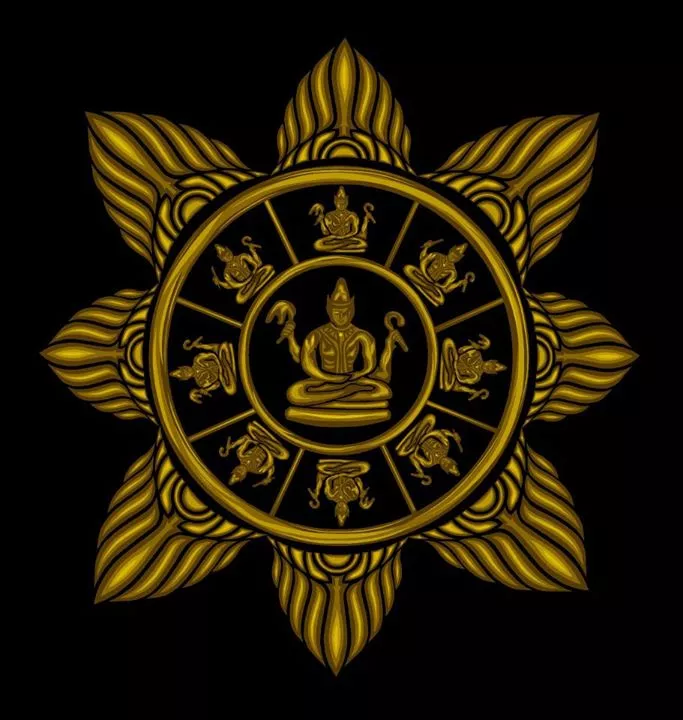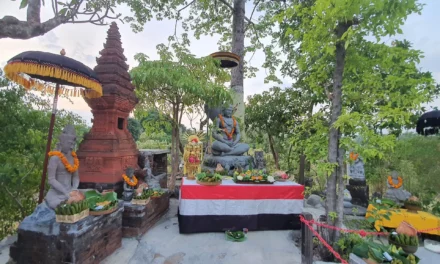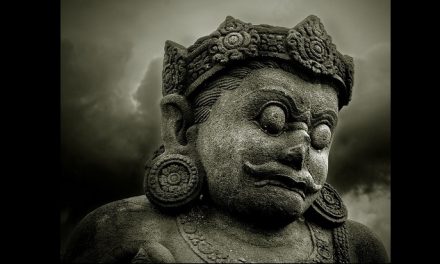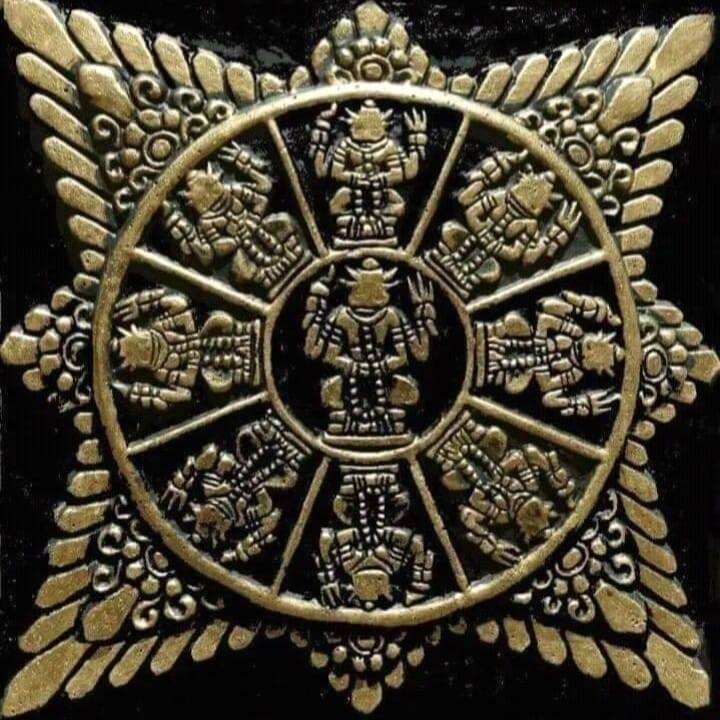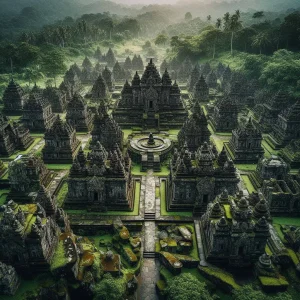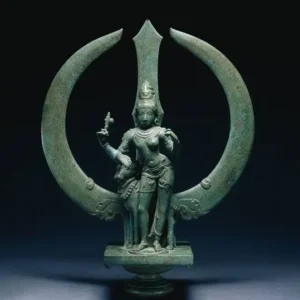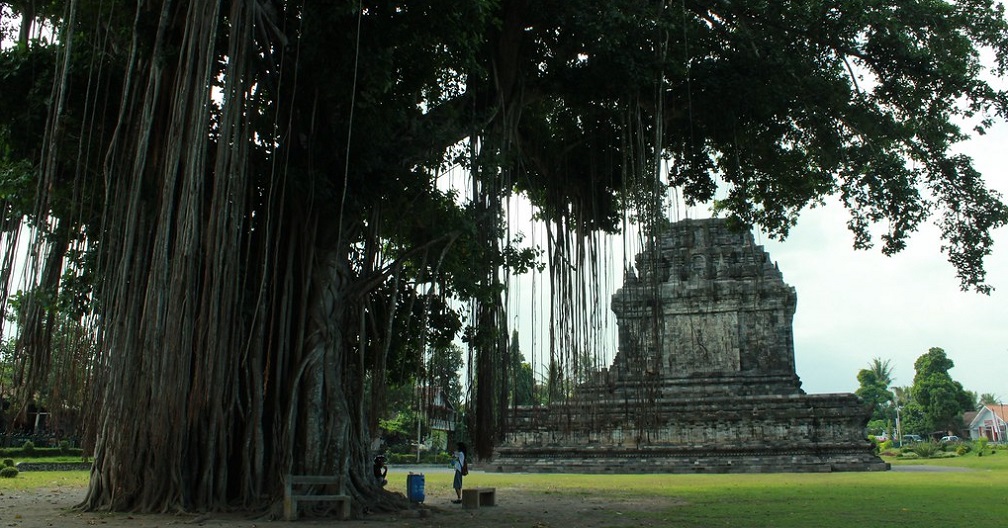
Sacred Waringin tree (Ficus benjamina) in Mendut Temple
The Kalpavriksha is the divine, wish-fulfilling tree in Hindu-Buddhist cosmology. It is the Tree of Life, the World Tree mentioned in various scriptures. It is being guarded by Kinnara and Kinnari, Apsaras and devatas.
The Kalpavriksha emerged from the primal waters during the Samudra manthan (‘Churning of the Ocean of Milk’) along with Kamadhenu (the wish-granting cow), the Amrit (nectar of immortality) and Airavata (the White Elephant of Indra).
Indra, the King of the gods, returned with this Kalpavriksha to his heaven and planted it there. Kalpavriksha is now said to be planted on Mount Meru in the middle of Indra’s five paradise gardens (devaloka).
It is said therefore that there are five Kalpavrikshas, which are called Mandana, Parijata, Santana, Kalpavriksha and Harichandana.
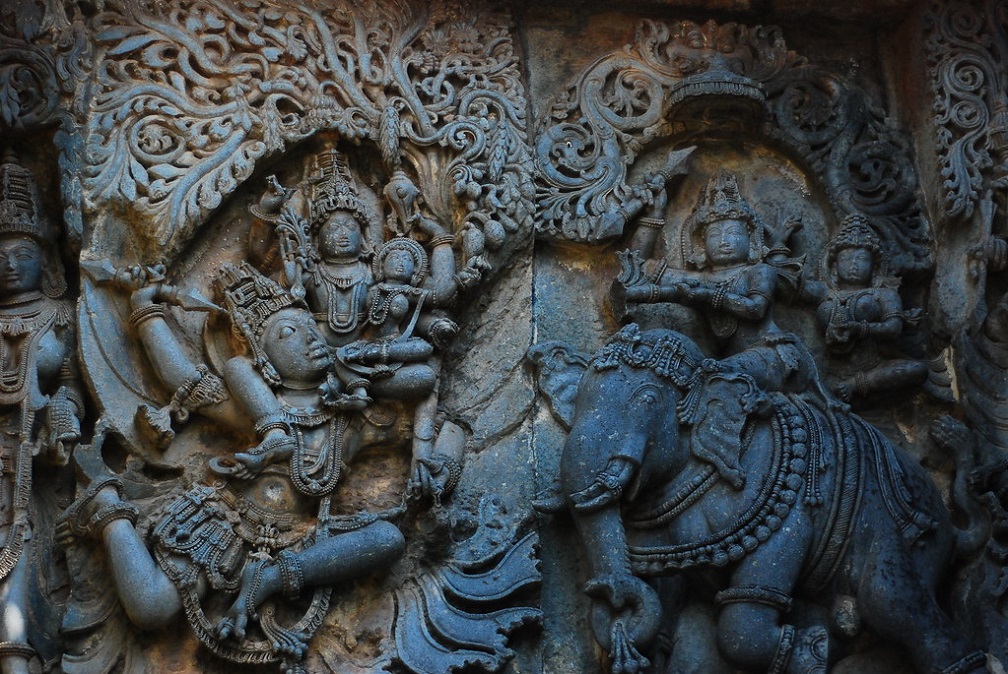
Krishna and Indra on Airavata and the Parijita tree
In representations of Shiva and Parvati, the Kalpavriksha often forms a canopy over Shiva. When the demon Andhakasura waged war, Shiva and Parvati gave their daughter Aranyani away to the Kalpavriksha for safekeeping. Parvati then requested Kalpavriksha to make her Vana Devi, the protector of forests.
In Jain cosmology, there are 10 Kalpavrikshas which grant 10 distinct wishes. It is said that in the three aras (periods) of humanity, Kalpavrikshas provided all that was needed, but towards the end of the third ara, the yield from them diminished.
Species of Kalpavriksha
It is not known of which species is the Kalpavriksha tree. The name of Kalpavriksha has attributed to many species such as Parijata (Erythrina variegata), Ficus benghalensis, Madhuca longifolia, Bassia butyracea, Shami tree (Prosopis cineraria) and others.
The Ashwatha (Sacred Fig) tree is also known as Kalapvriksha, as it is where Brahma and the deities reside, and it is where sage Narada taught the rishis how to worship the tree and its usefulness.
The Indian butter tree in the Himalayas is also called a Kalpavriskha by the people of the region.
However, it is the Banyan (or Nyagrodha) tree (Ficus benghalensis) that is most often referred to as Kalpavriksha, due to its majesty and because of its ability to amply provide for human needs.
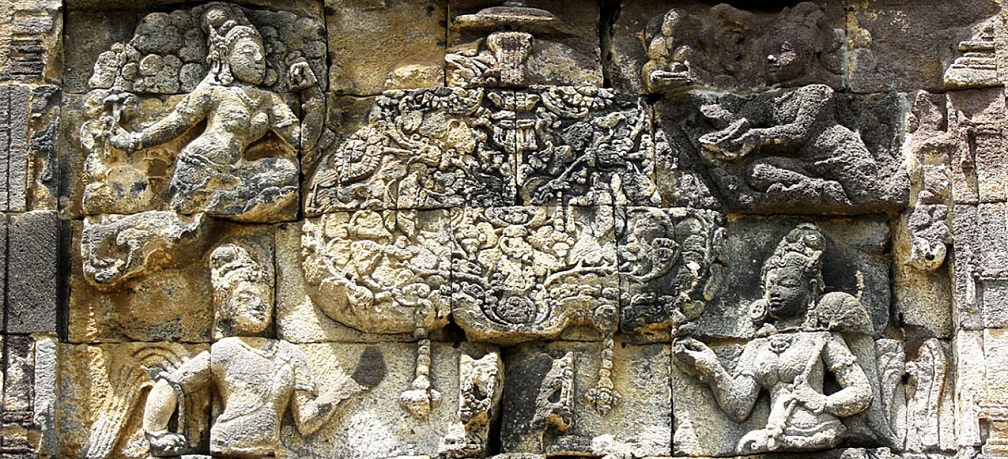
Kalpavriksha worshiped by gandharvas and kinnaras, Pawon temple, Java
The Kalpavriksha and the Nanda Vana Garden
The best of all heavens is the Nandavana, Lord Indra’s garden located in Amravati, the capital of Svarga Loka, which is guarded by Airavata, the white elephant (called Erawan in Thailand).
Amaravati was built by Vishwakarma, the architect of the gods. The inhabitants of Amaravati are entertained by music and every sort of festivities. Amaravati’s palaces are made of gold.
Svarga Loka is a set of heavenly worlds located on Mount Meru, where the righteous live in a paradise with celestial gardens planted with sacred trees and sweet-scented flowers before their next incarnation.
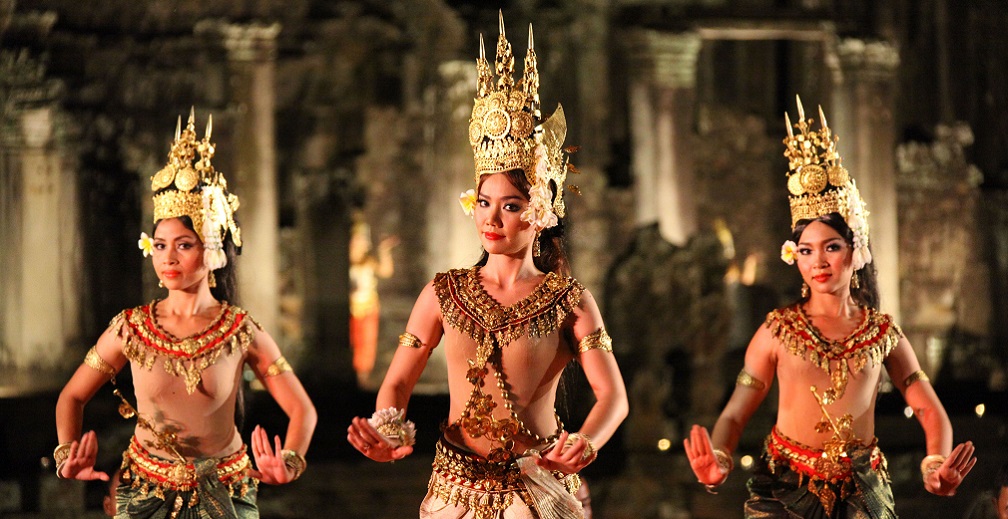
The groves are occupied by apsaras (celestial singers and dancers) who, together with the Gandharva (celestial musicians), entertain the demi-gods. The four most famous apsaras are Urvashi, Menaka, Rambha, and Tilottama.
However, in Svarga Loka, Lord Indra, who has everything, lives in fear of losing it all.
The myths explains that the Kalpavriksha was once located on Earth, but people started misusing it by wishing evil and wrong things.
The lesson of this is, that when we accumulate more and more wealth and material stuff, we always live in the fear of losing it.
One should instead aspire to detachment, attain moksha and enter true heaven.
